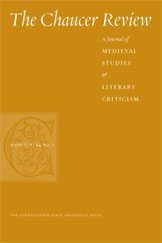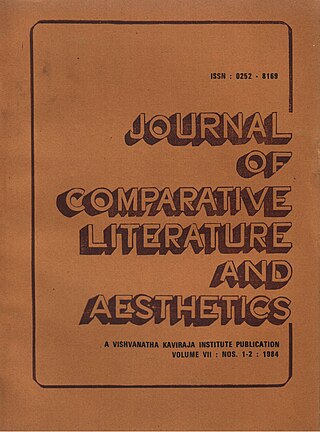
Aesthetics is a branch of philosophy that deals with the nature of beauty and taste, as well as the philosophy of art. It examines aesthetic values, often expressed through judgments of taste.

In aesthetics, the sublime is the quality of greatness, whether physical, moral, intellectual, metaphysical, aesthetic, spiritual, or artistic. The term especially refers to a greatness beyond all possibility of calculation, measurement, or imitation.

Gregory Paul Currie FAHA is a British philosopher and academic, known for his work on philosophical aesthetics and the philosophy of mind. Currie is Professor of Philosophy at the University of York and Executive Editor of Mind & Language.
This is an alphabetical index of articles about aesthetics.
Garry L. Hagberg is an author, professor, philosopher, and jazz musician, He is currently the James H. Ottaway Jr. Professor of Philosophy and Aesthetics at Bard College.
Richard Shusterman is an American pragmatist philosopher. Known for his contributions to philosophical aesthetics and the emerging field of somaesthetics, currently he is the Dorothy F. Schmidt Eminent Scholar in the Humanities and Professor of Philosophy at Florida Atlantic University.
Jerrold Levinson is distinguished university professor of philosophy at the University of Maryland, College Park. He is particularly noted for his work on the aesthetics of music, as well as for his search for meaning and ontology in film, art and humour.
Thomas Munro was an American philosopher of art and professor of art history at Western Reserve University. He served as Curator of Education for the Cleveland Museum of Art for 36 years (1931–67).
Encyclopedia of Aesthetics, published in 1998 by Oxford University Press, is an encyclopedia that covers philosophical, historical, sociological, and biographical aspects of Art and Aesthetics worldwide. The second edition (2014) is now available online as part of Oxford Art Online.
Applied aesthetics is the application of the branch of philosophy of aesthetics to cultural constructs. In a variety of fields, artifacts are created that have both practical functionality and aesthetic affectation. In some cases, aesthetics is primary, and in others, functionality is primary. At best, the two needs are synergistic, in which "beauty" makes an artifact work better, or in which more functional artifacts are appreciated as aesthetically pleasing. This achievement of form and function, of art and science, of beauty and usefulness, is the primary goal of design, in all of its domains.
Arts criticism is the process of describing, analyzing, interpreting, and judging works of art. It is distinct from art criticism due to its broader remit. The disciplines of arts criticism can be defined by the object being considered rather than the methodology : buildings, paintings, performances, music, visual media, or literary texts.
Elisabeth Schellekens is a Swedish philosopher and Chair Professor of Aesthetics at Uppsala University. Previously, she was Senior Lecturer at Durham University (2006-2014). Schellekens is known for her works in aesthetics. Her research interests include aesthetic cognitivism and objectivism, aesthetic normativity, Hume, Kant, aesthetic and moral properties, conceptual art, non-perceptual or intelligible aesthetic value, the relations between perception and knowledge, the aesthetics and ethics of cultural heritage, and the interaction between aesthetic, moral, cognitive and historical value in art.

The British Journal of Aesthetics is a quarterly peer-reviewed academic journal covering philosophical aesthetics and the philosophy of art. It was established in 1960 and is published by Oxford University Press on behalf of the British Society of Aesthetics. The first issue was edited by Harold Osborne in November 1960. The journal was originally published by Routledge and then by Thames & Hudson, before switching to its current publisher in 1975.

The Chaucer Review: A Journal of Medieval Studies and Literary Criticism is an academic journal published by the Penn State University Press. Founded in 1966 by Robert W. Frank, Jr. and Edmund Reiss, The Chaucer Review acts as a forum for the presentation and discussion of research and concepts about Chaucer and the literature of the Middle Ages. The journal publishes studies of language, social and political contexts, aesthetics, and associated meanings of Chaucer's poetry, as well as articles on medieval literature, philosophy, theology, and mythography relevant to study of the poet and his contemporaries, predecessors, and audiences.
American Society for Aesthetics (ASA) is a philosophical organization founded in 1942 to promote the study of aesthetics. The ASA sponsors national and regional conferences, and publishes the Journal of Aesthetics and Art Criticism, the American Society for Aesthetics Graduate Ejournal, and the ASA Newsletter. The organization also funds various projects.
David Carrier is an American philosopher of art and cultural critic.
Feminist aesthetics first emerged in the 1970s and refers not to a particular aesthetic or style but to perspectives that question assumptions in art and aesthetics concerning gender-role stereotypes, or gender. Feminist aesthetics has a relationship to philosophy. The historical philosophical views of what beauty, the arts, and sensory experiences are, relate to the idea of aesthetics. Aesthetics looks at styles of production. In particular, feminists argue that despite seeming neutral or inclusive, the way people think about art and aesthetics is influenced by gender roles. Feminist aesthetics is a tool for analyzing how art is understood using gendered issues. A person's gender identity affects the ways in which they perceive art and aesthetics because of their subject position and that perception is influenced by power. The ways in which people see art is also influenced by social values such as class and race. One's subject position in life changes the way art is perceived because of people's different knowledge's about life and experiences. In the way that feminist history unsettles traditional history, feminist aesthetics challenge philosophies of beauty, the arts and sensory experience.
Daniel Osher Nathan is an American philosopher and Professor of Philosophy at Texas Tech University. He is known for his expertise on aesthetics, ethical theory, and philosophy of law.
Cynthia A. Freeland is an American philosopher of art. She has published three monographs, over two dozen articles, and edited several books. She is Emeritus professor of philosophy at the University of Houston. She was the president of the American Society of Aesthetics until 2017. She has been awarded a fellowship from the National Endowment for the Humanities in 2003 for a research project on Fakes and Forgeries. Her book But is it Art? (2001) has been translated into fourteen languages and was republished as part of the Oxford Very Short Introductions series. She talked about her book Portraits&Persons with Nigel Warburton on the Philosophy Bites podcast. She was interviewed by Hans Maes for the book Conversations on Art and Aesthetics (2017) which includes a photograph of her by American photographer Steve Pyke.

The Journal of Comparative Literature and Aesthetics is a quarterly peer-reviewed journal published from India in the field of literature, philosophy, religion, and art history. The journal, published by Vishvanatha Kaviraja Institute of Comparative Literature and Aesthetics since 1977 as its official organ, addresses interdisciplinary and cross-cultural issues in literary understanding and interpretation, aesthetic theories, conceptual analysis of art, literature, philosophy, religion, mythology, history of ideas, literary theory, history, and criticism. It publishes essays and book reviews ranging across the literary and philosophical traditions of the East and the West. The institute, which publishes the journal and also academic books, was founded on 22 August 1977 coinciding with the birth centenary of legendary philosopher, aesthetician, and historian of Indian art, Ananda K. Coomaraswamy (1877-1947). Both the Institute and the journal were founded by Late Ananta Charan Sukla (1942-2020), a former professor of English and Comparative Literature at Sambalpur University, India. It is the oldest journal of India in the field of literature and philosophy which is still active, sans any institutional support.






